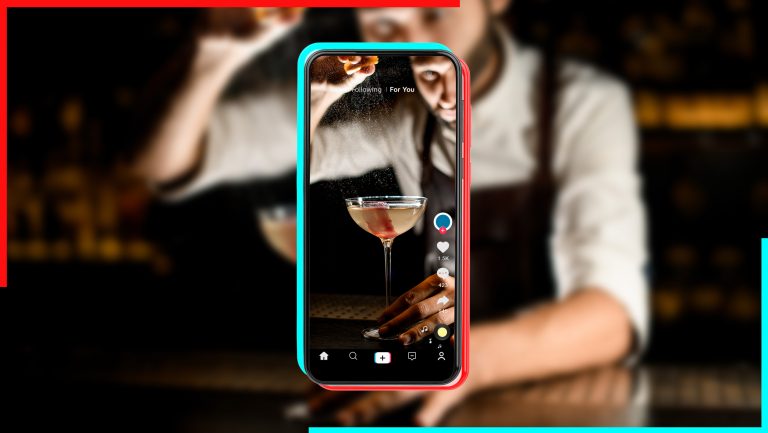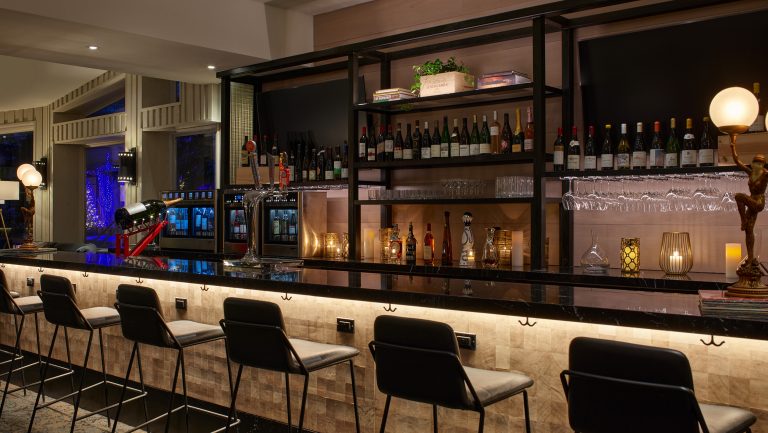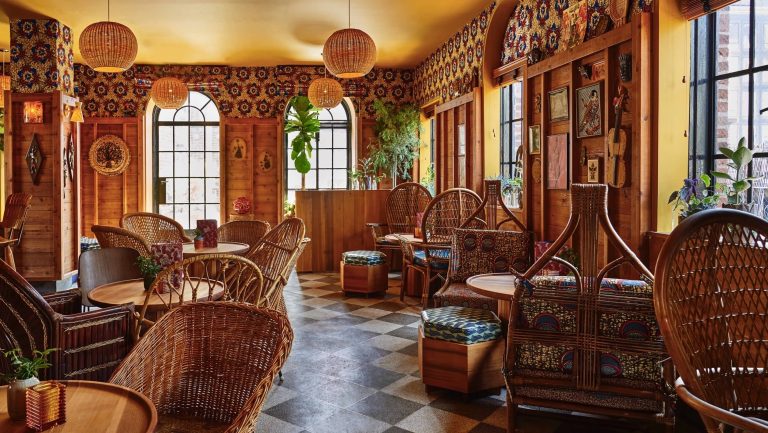After Nico Diaz lost his job running a bar program in Philadelphia at the start of the pandemic, he decided to dedicate more time to growing his social media presence as a bartender and brand ambassador on TikTok. He soon incorporated it into his own marketing business, CRFT Cocktail Catering Service, and secured his first client.
At the start of 2021, Diaz launched Bluecoat Gin’s TikTok account to build its brand and promote Philadelphia Distilling and its on-site distillery bar. “People were coming in based off of finding us on TikTok,” says Diaz, of the initiative’s early success.
Then he hit a snag. After Bluecoat Gin’s account reached 10,000 followers, he sent a formal application to TikTok to get Bluecoat’s account verified. “Within 24 hours I had their decision,” says Diaz. “It was a firm no.” After pursuing an explanation, he was told, in his words, “there were seven industries that TikTok would not align with and one of them was the spirits industry.”

Don’t miss the latest drinks industry news and insights. Sign up for our award-winning newsletters and get insider intel, resources, and trends delivered to your inbox every week.
TikTok might once have been relegated to “just that youth dancing app,” but those days are long gone. The platform’s success went stratospheric during the pandemic, as people stuck at home streamed endless videos. TikTok has been the top app by worldwide downloads in every quarter since the start of 2021, according to a report by Sensor Tower, now with 3.5 billion all-time downloads. But while creators exploit every imaginable niche and TikTok’s audience represents a goliath marketing opportunity, there is a notable absence of accounts from bar businesses—and none appear to be verified.
This is thanks to the same opaque policies around alcohol-related content that prevented Diaz from growing Bluecoat Gin’s account any further. TikTok’s content policy bans accounts from making branded content which features or references “Alcoholic beverages (wine, beer, spirits, etc.), alcohol clubs/subscription services, alcohol-making kits, or alcohol-sponsored events.” This includes alcohol-free or no-alcohol alternatives and soft drinks presented as mixers for alcohol.
When it comes to community posting (meaning independent creators posting instead of brand accounts or advertisers), TikTok’s rules are somewhat looser. TikTok states that content that “offers the purchase, sale, trade, or solicitation” of alcohol products is prohibited for individual accounts. This year, TikTok strengthened its account-level enforcement capabilities, with over 100 million videos removed in the first quarter of 2022, of which 21 percent represented “illegal activities and regulated goods,” which, by TikTok’s definition, includes alcohol.
What precisely falls under their ban, however, is subject to interpretation, and spokespeople from TikTok have so far been unreachable. David Hoos, the B2B performance marketing manager at The Outloud Group, an influencer marketing company, says, by his understanding, people can show or use alcohol all they want on TikTok—which they do. #DrinkTok has 1.1 billion views, and there is a proliferation of popular creators like @join_jules, who makes home cocktail tutorials for nearly 830,000 followers. But creators run the risk of falling foul of TikTok policies when it appears that they, their businesses, or another brand that they’re representing might be benefiting from their content.

Steve Higdon, the creator behind @60SecondBourbonReview, which became a viral success story during the pandemic, has experienced this firsthand. His lo-fi, goofy, and charming bourbon reviews—initially created for his sons—have now garnered over 23 million views. Off the back of the account’s success he launched the BIG Bourbon Club (the BIG stands for “Bourbon is Good”) as he recognized the need for a more accessible and inclusive bourbon community.
But after the change in policy earlier this year, he has received a fraction of the views and his following hit a wall. “I used the TikTok algorithm to grow the movement,” says Higdon, “and now they’ve put the kibosh on what the BIG Bourbon Club and 60 Second Review want to talk about. I have felt the brunt of this new policy without a doubt.” He adds, “There are thousands of accounts on there that chug whisky, throw up, have fights, and they continue to grow. Why there is such inconsistency about how this rule is applied is beyond me and most of the other original TikTok creators.”
Hoos backs this up. “It does seem like a content category that could still run the risk of a decline if/when TikTok thinks that something looks like it’s promoting an alcohol brand,” says Hoos. “It’s a reasonable assumption to think that TikTok’s algorithm is trying to not give extra juice to alcohol-based content.”
Understanding the Algorithm and Optimizing Content
Mastering this algorithm is the holy grail of TikTok success and can land a creator’s content on the “For You” feed—the never-ending scroll that is the homepage, meticulously and perpetually curated based on each user’s behavior on the platform, including their interactions, hashtags, captions, location, and more. Videos that ride the fine line of TikTok’s prohibitions aren’t always removed; anecdotally, they seem to be punished by the algorithm instead.
Others ascend to multimillion viral success stories, which is why some bars and bartenders persist in navigating the haywire system. For example, John Rondi and his son, John Rondi Jr., create reviews, cocktail how-tos, and offer beverage intel via Johnny Drinks for 2.5 million followers, and—in what seems an all-out contradiction—they openly partner with alcohol brands using #TikTokpartner.
TikTok makes its data-driven advice on how to create hit videos available to the public. Suggestions include shooting in high-resolution video, keeping videos between 21 and 34 seconds long (25 percent of top-performing videos are in this range), and adding audio. There’s also a Creator Marketplace that acts as a center for marketing tools and reporting data.
With readily available information from TikTok and elsewhere, creators can learn the basics without bringing in outside consultants, like Diaz’s company, and this path seems to offer more room for maneuver. According to TikTok, 56 percent of users and 67 percent of creators feel closer to brands they see on TikTok “when they publish human, unpolished content.” The polished cocktails that do well on Instagram, for example, are less popular with authenticity-chasing TikTok users who like seeing a more raw video.

This was Luiz Fernandes’s approach when he created a personal TikTok account surrounding his newly-acquired family business, Labaredas Brazilian BBQ & Bar in Marlborough, Massachusetts. Fernandes used his background managing social media accounts and creating video content for restaurants in his former marketing day job to highlight the drinks and spirits at Labaredas. “I wanted to find a way to scale it past the physical space, because these days I feel like if you don’t do that you’re missing out,” says Fernandes.
Fernandes, talking direct-to-camera from across the bar, offers approachable cocktail-making videos, funny commentaries on the industry, and tips and tricks, while tapping into various TikTok trends. The account soon grew to 130,000 followers, and views translated into visitors. One customer who found Labaredas on TikTok came in with his family from 2.5 hours away, and he has since returned. That guest might have traveled the farthest, but he isn’t alone in letting TikTok videos guide him to Labaredas, Fernandes says.
After the early 2022 change in TikTok’s regulations, Fernandes saw some drop off in growth, too. Videos now regularly get less than 10,000 views—far fewer than the 100,000+ views he was seeing before. He still has a pretty steady run of breakout hits, however, that get up to about 75,000 views, with one video reaching two million, which, in his opinion, makes it worth the effort. “In this day and age, the best platform for growth is TikTok,” says Fernandes.
Independent Content Creators Are Key
While some bar businesses might not want to enter the TikTok fray, an easy workaround many bar owners employ is to simply invite in local creators. Data published by TikTok shows that more than 40 percent of users “try something or go somewhere new after seeing it at least once.” Insights not funded by TikTok have found encouraging results as well. One study on restaurants found that 36 percent of users visited or ordered food from a restaurant that they previously saw on TikTok, and that 20 percent of users visited a restaurant in a different city based on a TikTok video.
Nayah Harper is one such content creator who often posts videos after being invited to a bar. A senior professional in law and policy in New York City, she runs a TikTok on the side: @nayahbynature, which focuses on fun things to do in New York and elsewhere. Specialty drinks on the menu can generate enormous reach if a creator experiences the drink firsthand, Harper says. She cites a video she made featuring a drink that hangs from the ceiling at Thyme in New York City, which was one of her all-time top-performing videos with over 110,000 views.
As an independent creator, she has an 11 percent engagement rate, compared to TikTok’s organic engagement rate of between three and nine percent (according to an estimate by Influencer Marketing Hub), which means qualitatively, Harper’s videos make a greater impact on her viewers. When picking a creator to host for a potential video, bars will have the best success with people who live the life of the customers they’re trying to attract—or in other words, who are already cosmically aligned in the algorithm—and therefore will engage a brand-appropriate audience. If the creator is open about reporting engagement and reach, a bar business can measure the ROI of the endeavor more easily.

“As an influencer and content creator, you have to do your own market research,” says Harper, talking about how she decides which bars to feature and when. “Who are my followers? What are they doing and when are they doing it? TikTok provides that information so you can make more informed decisions about posting.”
Responsible Content
There is a general consensus that TikTok’s strict policies against alcohol-related content are to protect its younger demographic. According to Statista, 25 percent of its users are between 10 and 19 years old, so anything resembling branded alcohol advertising is problematic. But that doesn’t stop user-generated content from promoting irresponsible drinking. According to one study published in September 2021 in the Journal of Studies on Alcohol and Drugs, the 100 most popular videos with #alcohol had, at the time, been viewed collectively 291,999,100 times, and more than half of videos (61 percent) depicted consuming multiple drinks quickly.
“If it’s a genuine fight to not corrupt the kids, I’m for it,” says Jordis Unga, the general manager of Katana Kitten in New York, who recently created a TikTok account for the bar. She wanted to capture the wild energy of the venue and create a tagging post for the many creators who feature Katana Kitten’s cocktails. She’s not into a “super curated” aesthetic, which fits with the platform’s MO—the algorithm seems to be allergic to slick marketing content in any form. She’s not sure if she’ll persevere in light of the regulations, but, she adds, “There is a responsible way to do it, which is what the cocktail industry would strive to do.”
As for Diaz, he’s no longer in marketing, but he still makes videos on TikTok for his personal account, @crftybartender, including about the Ranstead Room in Philadelphia, where he is now the head bartender. But he has a more casual and local approach, solely viewing TikTok as a way to attract new guests and work opportunities. “I don’t use trending hashtags or any of the things that all the TikTok gurus tell you to do anymore,” says Diaz. “I wanted to niche down into my industry and my city. That’s what’s valuable for me.”

Dispatch
Sign up for our award-winning newsletter
Don’t miss the latest drinks industry news and insights—delivered to your inbox every week.
Nickolaus Hines is a journalist who writes about beer, spirits, food, and travel. He’s the food and drinks editor at Matador Network and has written about drinks for Liquor.com, Men’s Health, October, Hop Culture, Supercall, and VinePair.






